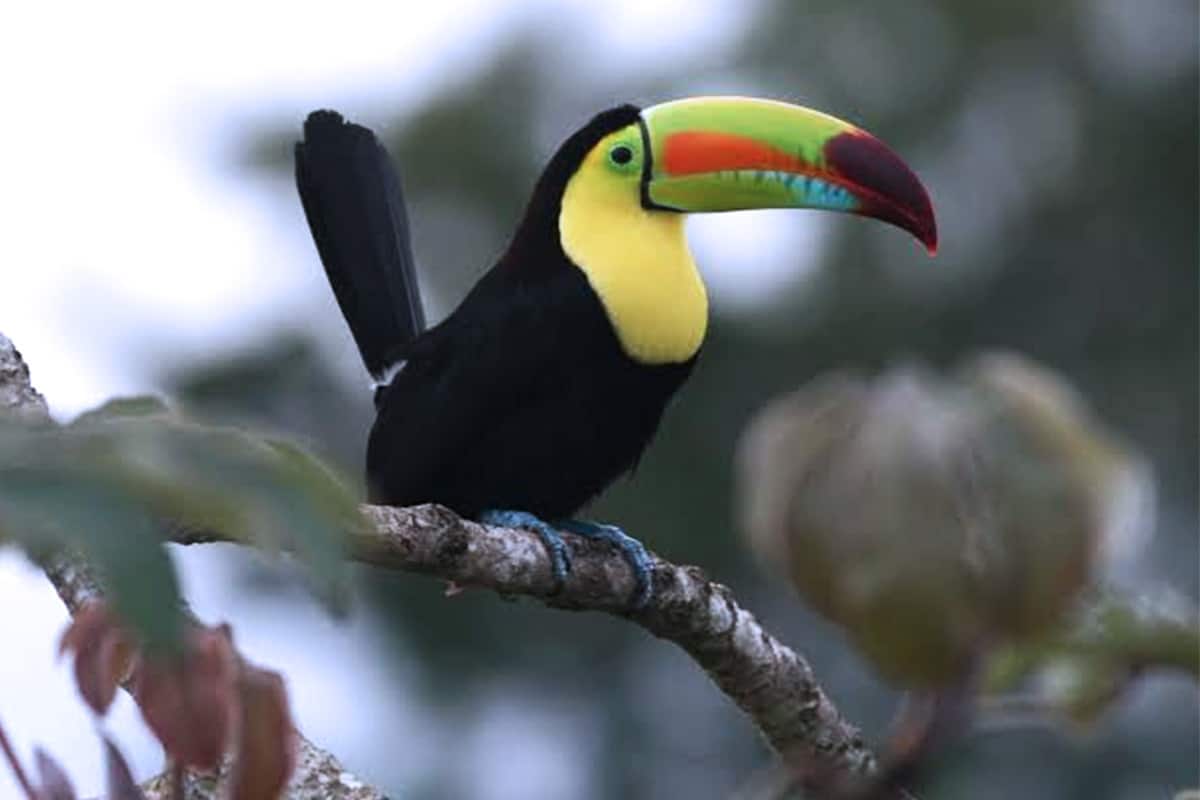With its oversized beak and incredible coloration, few species represent the natural beauty of Costa Rica like the keel-billed toucan. Let’s learn a little more about this tropical wonder.
The keel-billed toucan (Ramphastos sulfuratus) has a much better name in Spanish. I couldn’t find anything on why it’s called keel-billed. The internet told me a keel is a part of a ship, but that seems unrelated, so let me know if you know. The Spanish name, tucán pico arcoíris or tucán pico iris, translates to rainbow-billed toucan which is exactly what you want its name to be when you see one.
Of the 42 species of toucans that inhabit the Americas, six call Costa Rica home. The keel-billed toucan is the second largest of the six, coming in at 18 inches long and weighing about three quarters of a pound. Their bodies are black with red and white patches at the base of the tail, their necks and faces are bright yellow with some green eyeliner around the eyes, their beaks are a rainbow of bright colors, and they top it off with blue feet.
Their rainbow beaks account for a full third of their body length, and they look so big and bulky that it shouldn’t be possible for them to actually fly. The secret is in how the beak is made. It looks heavy and solid, but it’s mostly hollow, made of the protein keratin and thin rods of bone.
Keel-billed toucans have zygodactyl feet which is a term that describes how their toes are arranged. Picture a bird-foot with four toes and label the toes one through four in order. In zygodactyl feet, toes one and four face backward and toes two and three face forward. Now, picture that four-toed foot holding onto a branch. It allows them to be very steady while hopping from branch to branch in the treetops.
They travel in loose flocks, usually of a few individuals, but every once in a while, you can see a group of over ten hopping around in a large tree together. They’re easy to spot because of their huge colorful beaks, but their flight pattern gives them away when you’re at a distance too great to see their colors. They flap their wings in a quick burst, then spread their wings and glide, and then repeat. They normally only fly a short distance at any one time.
Though their range map claims that they can be found throughout the entirety of Guanacaste, I’ve only seen one once in the drier parts of the province. I was in a little hotel in Samara and one landed outside of window. I brought it up to a biologist friend, and he thought it was probably an escaped pet. They’re easily spotted in the more humid forests of northern Guanacaste, across the upper part of the country and down the Caribbean coast.
About the Author
Vincent Losasso, founder of Guanacaste Wildlife Monitoring, is a biologist who works with camera traps throughout Costa Rica. Learn more about his projects on facebook or instagram. You can also email him at: vincent@guanacastewildlifemonitoring.com






